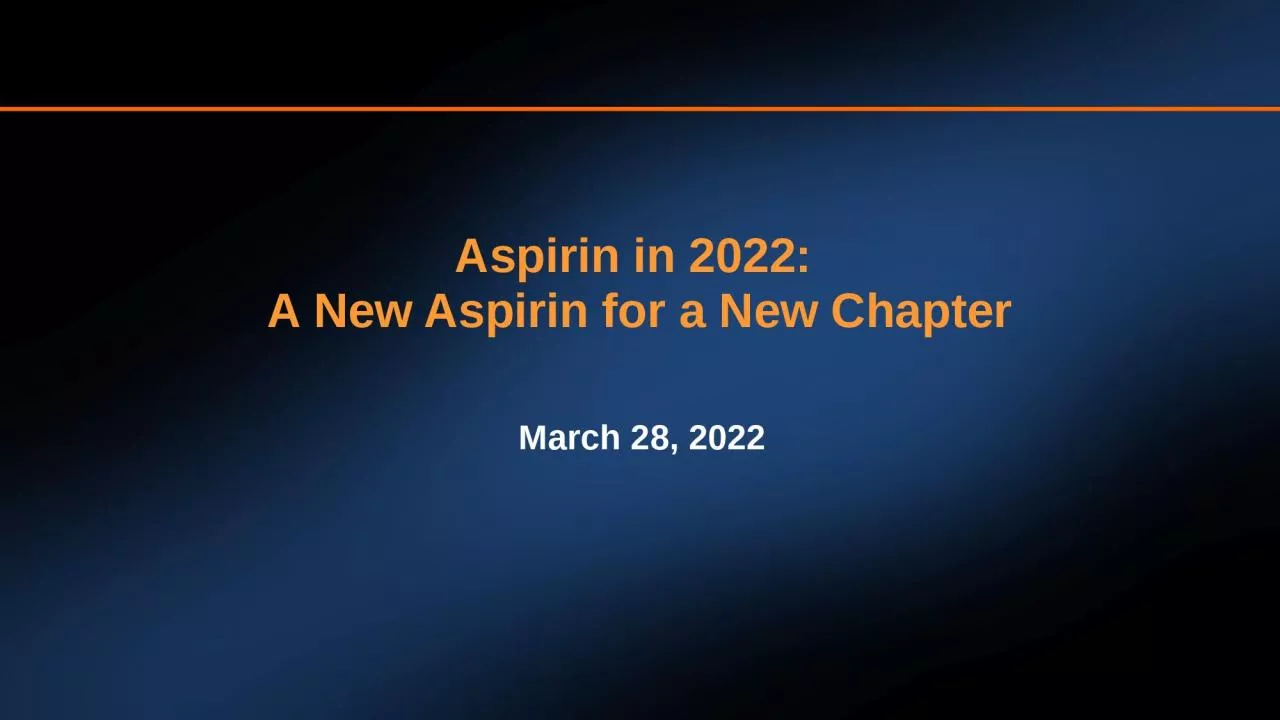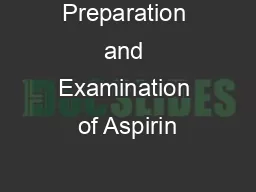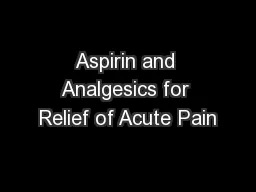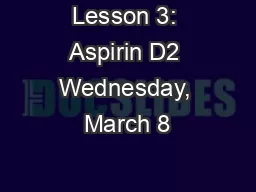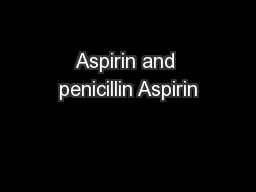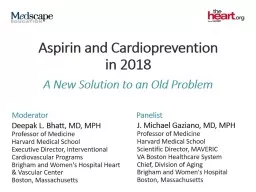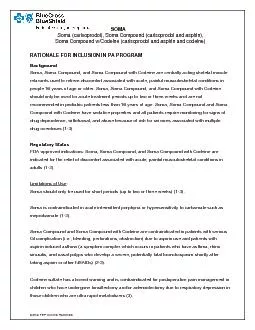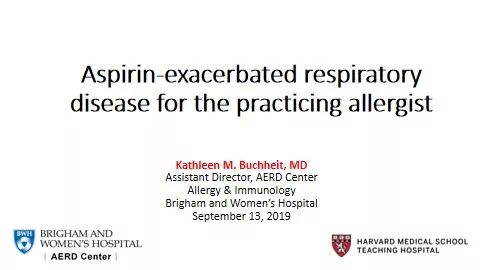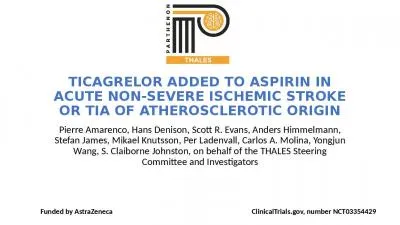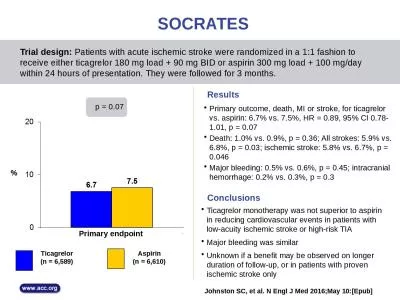PPT-Aspirin in 2022: A New Aspirin for a New Chapter
Author : belinda | Published Date : 2023-05-27
March 28 2022 Disclosures Present ResearchGrant Funding JanssenJohnson amp Johnson CSL Behring SCAD Alliance Baim Institute Patents and Stocks None Equity nference
Presentation Embed Code
Download Presentation
Download Presentation The PPT/PDF document "Aspirin in 2022: A New Aspirin for a Ne..." is the property of its rightful owner. Permission is granted to download and print the materials on this website for personal, non-commercial use only, and to display it on your personal computer provided you do not modify the materials and that you retain all copyright notices contained in the materials. By downloading content from our website, you accept the terms of this agreement.
Aspirin in 2022: A New Aspirin for a New Chapter: Transcript
Download Rules Of Document
"Aspirin in 2022: A New Aspirin for a New Chapter"The content belongs to its owner. You may download and print it for personal use, without modification, and keep all copyright notices. By downloading, you agree to these terms.
Related Documents

